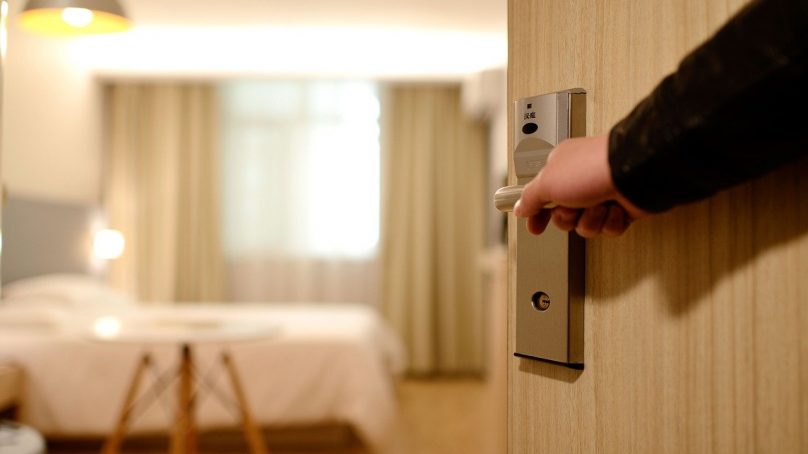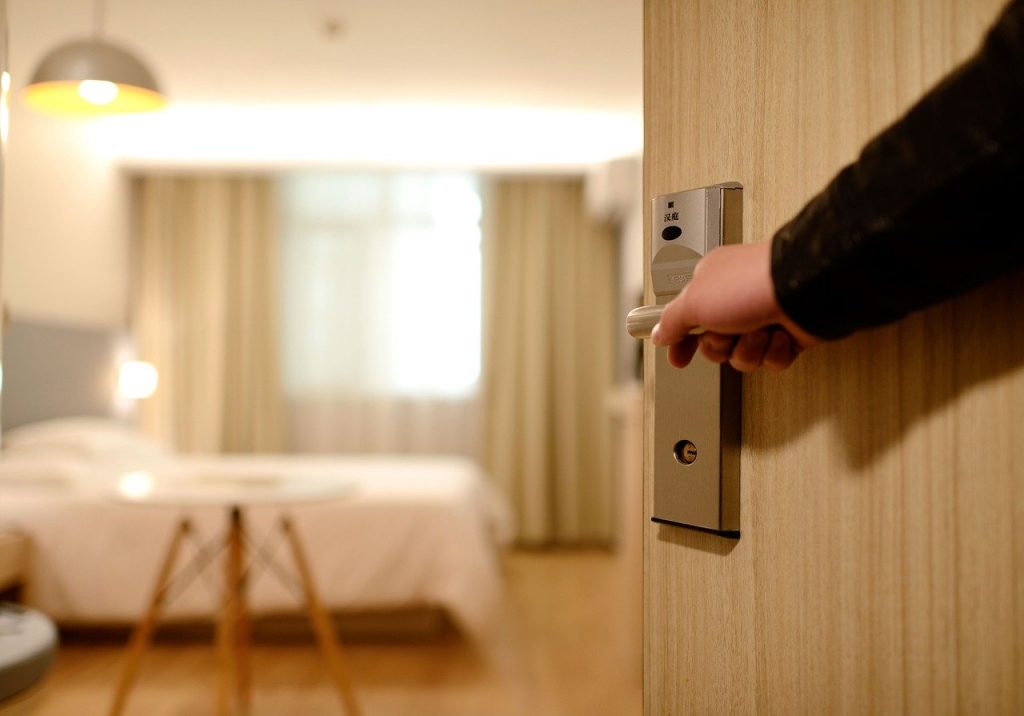
 By Steven Harrell, Regional Hospitality Leader
By Steven Harrell, Regional Hospitality Leader
Since the start of the pandemic, we have become quite comfortable with new types of behavior. We are more comfortable working from home, maintaining productivity, and connecting through virtual platforms. We are also far more aware of our personal health and well-being, and we have accepted precautions like physical distancing, personal protective equipment, and hand sanitizer.
At the moment, most of us remain isolated at home, but as we resume business and leisure travel, how will newly adopted behaviors and guest expectations shift the hotel experience?
While much remains unknown, we can safely assume that an enhanced focus on cleanliness and some level of physical distancing will be integral elements in the return of the hospitality industry. The long term distinction between tactical approaches and permanent changes is still unclear, but hospitality clients must consider what it means to design hotel experiences with new behaviors and needs in mind.
Now that we think about human contact and cleanliness differently, how must hotels rethink the guest experience so that guests feel comfortable to be in a public setting again?
Much has been written about how technology can facilitate new modes of service, but our hotel clients also have to ask what they risk losing when we reduce or remove the human interactions that are at the core of the hospitality experience. We are certain that the return of hospitality cannot be only about reduction – reduced density, reduced interaction, reduced connection – we must find new solutions and refocus existing activities to fill these gaps with an even more elevated guest experience.
Here are three ideas that hotels can consider to meet new expectations and deliver an exceptional guest experience in a post-COVID era.
- Revive and rethink room service.
Over the past few years, self-serve options and grab-and-go markets have reduced the demand on room service. Now that there’s a heightened concern over health and wellness and physical distancing, could room service provide an opportunity to care for guests and deliver an experience?
Hotel operations and food preparation teams will be required to modify their sanitation, preparation, and product safety procedures and focus on communicating these new practices to guests. As a focus on wellness is expected to continue as a result of the health crisis, guests may also turn to room service for access to healthy produce, opting for fresh salads and locally sourced ingredients.
How will the standard interaction with a room service runner change? Properties that feature “robot butlers” already exist but will they become more common in the service chain in order to reduce the need for physical contact between staff and guests?
Certainly, there are many logistics to consider. When it comes to room delivery for groups and families, for example, hotels will have to modify and scale preparation, portion, and packaging. And if robot butlers do start taking on more room service tasks, we’ll have to consider convoys of robots clogging up corridors and elevators to deliver breakfast between the hours of 6-9:00 a.m.
In negotiating limited occupancies and limited operations, we have heard our clients take meal orders and delivery times at check-in or reservation allowing them to understand and manage load and supply. This also extends the window of communication with guests, providing individual care, offering curated menus, and learning guest preference and applying loyalty knowledge.
- Support safety through cleanliness and contactless technology.
Careful attention to cleanliness is already a key design consideration in the hotel industry. For example, white bed linens are widely adopted to reassure guests and convey cleanliness. Prior to the pandemic, properties and brands were also moving toward the significant implementation of hard surface flooring options. Now, we could see certification standards and procedures like Fitwel, Well Certification, Pure Wellness, and others proliferate to help reassure guests that cleanliness and wellness are central to the experience of welcoming them back.
There are a number of strategies hotels can consider to further demonstrate their commitment to safety through cleanliness.
For one, hotels could consider using ultraviolet technology to demonstrate a higher standard of cleanliness. We are already seeing reports of properties using ultraviolet-equipped robotic units similar to those used in healthcare facilities. The machines enter the room after it is cleaned by housekeeping staff and is designed to kill viruses with flashes of intense ultraviolet light.
The industry is also expected to increasingly implement contactless or touchless technologies such as self-service check-in and mobile room keys to deter the spread of germs and minimize interactions. The challenge with this solution will be to maintain the personal touch that is deeply embedded in the hospitality experience. Any digital experience in a hotel must be designed to deliver experience and convenience – when visitors arrive at their rooms, throughout the property, and within the hotel’s loyalty app. The technology must also provide opportunities for guests to connect with the property to provide feedback and offer visibility for the management team for issue resolution.
Touchless technologies will increase in restrooms as well, extending beyond the public restrooms and into the guest rooms. Minimizing touch and contact will also lead to a reduction of surfaces and items within the guest room. The challenge will be to look at this decluttered or vacant space as an opportunity to enhance the design experience by incorporating wellness elements such as yoga equipment, rowing, exercise bikes, plants, and wall art.
- Require new standards for meetings and events.
As we have become more accustomed to remote connectiveness, we will not rely on face-to-face
meetings as much as we used to. What will this mean for meeting and event bookings — and the associated revenue?
For one, hotels can position themselves as remote offices or as virtual event hosts. To do that, reflect on whether the existing hotel WiFi network has enough bandwidth to support widespread videoconferencing. You may also need to retrofit spaces and meeting rooms to deliver access to high quality technology beyond what can be provided at home, and consider providing support staff with digital fluency to assist working guests. Videoconferencing suites with purposeful lighting, green screens, and audio-visual infrastructure and digitally fluent concierges could become the new differentiator. With the corporate workplace struggling under new space requirements, will the hotels have an opportunity to serve as strategic partners with local office tenants or building managers?
The longer-term future of large events and exhibits is hard to determine. People will still gather for weddings and special occasions, but what will that look like, and what about business and trade conferences and exhibits?
To minimize physical contact between attendees, meeting spaces will need to be reconfigured to de -densify the floorspace. Six feet of separation between people equates to a significant reduction compared to previous ratios. Exhibitions and trade show events may be required to limit occupancy by implementing ticketed sessions, or exhibitors may be required to use separately enclosed display environments with regulated occupancy, air changes, and cleaning and protective procedures.
Regardless of adjustments to maximum allowed occupancy, hotels will need to split the arrival and queuing of guests into multiple locations and across a lengthened timeline. A six-foot spacing rule will extend the space required for queuing. Temperature checks and health screenings will increase the time it takes to process arrivals. Designing multiple entry points, and separate exit points can help manage these new requirements. Digital ticketing and prescreening could also decrease intake time and create opportunities within these apps and services to extend brand and property engagement.
As the industry manages its return, both existing and emerging technology will play a key role in accommodating new expectations around physical distancing, cleanliness and safety, and virtual connectedness. While facilities are closed or experiencing reduced occupancies, hotels should consider if this moment is an opportune time to plan and improve technology infrastructure and reconfigure space.
The pandemic has changed many things, but we know it has not changed the desire for travel and the hospitality experience.
Add to Favorites















